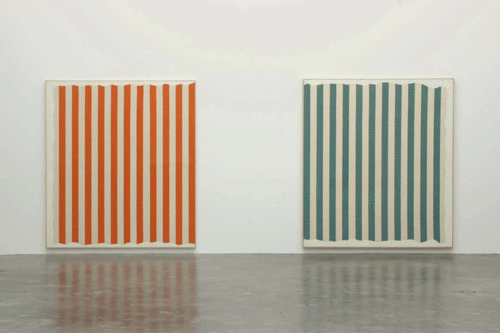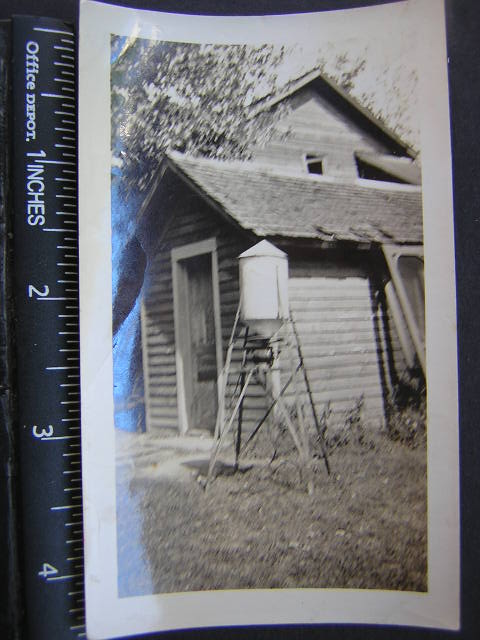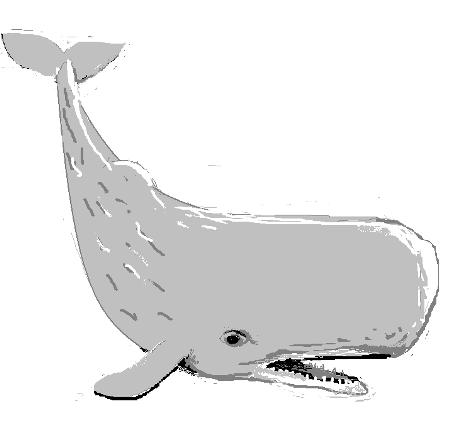Schwarz
View current page
...more recent posts
Musician Chris Butler was looking for a house where he could make loud music without disturbing his neighbors. He found the perfect house and for a deal, but it came with certain "conditions." The house was the childhood home of Jeffrey Dahmer and the scene of Dahmer's first killing.

the car talk guys were yacking about the legend of the $50.00 army surplus jeep in a crate packed in cosmoline.
via jeepparts
restore antique meat slicer blog
ni-3 cube end table
stunningly wild collection of hand made glass objects by andy paiko including his absinthe fountains
via vz
"Like an echo from the caves of coccamaura, i came forth whilst Dierdre wept cool tears” – from a celtic fairy tale. The bust, "Deirdre" was a true collaboration between the two of us. Mr. Little presented Mr. Sellers with the concept of crafting a weeping bust that cried tears of wax. Mr. Sellers sculpted the bust based on a neo-classical inspiration. The functionality of the piece is quite remarkable as the back of the sculpture is carved on an angle allowing for the melting wax to flow through the opening of the eyes.via vz
Chip Taylor attended Archbishop Stepinac High School in White Plains, New York. After an unsuccessful attempt to become a professional golfer, Taylor entered the music business. He wrote and composed pop and rock songs, both alone and with other songwriters including Al Gorgoni (as the duo Just Us), Billy Vera, Ted Daryll, and Jerry Ragovoy.interviewed and featured on michael shelly wfmu
Taylor's best known songs are "Wild Thing", which was originally recorded in 1965 by Jordan Christopher & The Wild Ones but became best known as a 1966 hit single for The Troggs (and a 1967 live performance by Jimi Hendrix), and "Angel of the Morning", a hit first for Merrilee Rush in 1968, and then becoming an even bigger hit in 1981 for country-pop singer Juice Newton (whose single sold more than a million copies in the United States). Other Taylor compositions that made entries onto the pop and country charts include "He Sits at Your Table" (Willie Nelson), "I Can't Let Go", "The Baby" (The Hollies), "Worry" (Johnny Tillotson), "Make Me Belong to You", "I Can Make It With You" (The Pozo Seco Singers, Jackie DeShannon), "Any Way That You Want Me" (The Troggs, Evie Sands, Juice Newton), "Step Out of Your Mind", "Country Girl City Man", "I'll Hold Out My Hand", "Try (Just a Little Bit Harder)" (Janis Joplin) and "Lonely Is As Lonely Does" (The Fleetwoods). Country hits written and composed by Taylor include "Sweet Dream Woman" (Waylon Jennings), "A Little Bit Later On Down the Line" (Bobby Bare) and "Son of a Rotten Gambler" (Emmylou Harris, the Hollies, Anne Murray).
hunt and tony sales on rundgren radio
Four years after Katrina, the rebuilding of New Orleans is not proceeding the way anyone envisioned, nor with the expected cast of characters. (If I may emphasize: Brad Pitt is the city’s most innovative and ambitious housing developer.) But it’s hard to say what people were expecting, given the magnitude of the disaster and the hopes raised in the weeks immediately following. Seventeen days after the storm, President George W. Bush stood in Jackson Square and promised: “We will stay as long as it takes to help citizens rebuild their communities and their lives.” The terms we, as long as it takes, and help turned out to be fairly elastic. The Federal Emergency Management Agency shuttered its long-term recovery office about six months later, after a squabble with the city over who would pay for the planning process. Since then, depending on whom you talk to, government at all levels has been passive and slow-moving at best, or belligerent and actively harmful at worst. Mayor Ray Nagin occasionally surfaces to advertise a big new scheme (a jazz park, a theater district), about which no one ever hears again. A new 20-year master plan and comprehensive zoning ordinance was being ironed out early this summer, but it remains subject to city-council approval. A post-Katrina master plan has been under discussion since before the floodwaters were pumped out.via jim louis
In the absence of strong central leadership, the rebuilding has atomized into a series of independent neighborhood projects. And this has turned New Orleans—moist, hot, with a fecund substrate that seems to allow almost anything to propagate—into something of a petri dish for ideas about housing and urban life. An assortment of foundations, church groups, academics, corporate titans, Hollywood celebrities, young people with big ideas, and architects on a mission have been working independently to rebuild the city’s neighborhoods, all wholly unconcerned about the missing master plan. It’s at once exhilarating and frightening to behold.
indigo
The paintings exhibited here in the gallery represent the first works in which Buren started using a pre-printed fabric to express his vision. Up until this point, the artist had been painting colored shapes, specifically stripes, on various fabrics and colored bed sheets. In September of 1965, while in a Parisian market, Buren found different kinds of commonly used pre-printed striped fabrics, including one with alternating white and colored stripes. Buren realized this was the perfect medium in which to create his work, reducing his paintings to their simplest visual and physical elements and ridding them of allusion or subjectivity. Each stripe has a standard width of 8.7cm and was limited to the colors green, yellow, blue, red, orange, brown, and black interspersed with equidistant white bands. Given these standardized limitations, Buren varied the size and proportion of the canvases. He would then apply white painted lines or scalloped patterning at the edges of these canvases to differentiate his work from a readymade. The artist was able to break down the paintings to the very basic components of the work – a partly painted surface, a support and its surroundings.
In 1844, the missionaries in Mangalore, who knew a little about weaving business, took the initiative and started a weaving industry to give employment. Local weavers were also employed to train young boys. The looms of Basel Mission at Mangalore were pioneering and it was because of master weaver, John Haller that Khaki got its global recognition.
However, there is an interesting reference to the birth of Khaki. Sir Henry Lumsden, who was stationed in India in 1846, dyed his cotton pajamas with a plant extract, mazari, to create a uniform more suitable to the climate than the traditional red felt issued at the time. Its tawny color, similar to the region's saffron dust, helped the clothing to blend in with sand. The term 'Khaki' comes from the Hindi and Urdu word for 'earth' or 'dust-coloured' .
Lumsden commanded a British army unit in the Punjab. The uniform at that time included resplendent white trousers worn with red tunics. He began wearing pajama bottoms, primarily to find a more comfortable alternative to the trousers in the tropical Punjab heat. The pajamas were of a lighter material and less tightly fitted.
To disguise them somewhat, he decided to colour them with a dye that would blend in with the local terrain. He decided to use mazari, a native plant. Lumsden soon realized that his new uniform has another advantage than just comfort. His new Khaki uniform trousers were more suitable in battle than the very conspicuous white pants and red tunic. There were real advantages to being able to blend in with the terrine.
John Haller, a trained European weaver, introduced in 1851 the first handloom with fly shelter cottage industry in Mangalore. He also invented new dyes and colour out of indigenous ingredients. The invention of Khaki dye is attributed to him.
Lord Robertson who visited the weaving establishment was recommended the newly invented Khaki for the British army uniform the world over. The factory was the most important work of the Basel Mission started in the district in 1865.
Haller set up a laboratory and began experimenting with methods for dyeing and weaving fabric. He began to market Khaki and eventually the fabric was adopted by the British Armed Services as the material for uniforms for their troops around the world. Haller expanded production by importing twenty-one looms from Europe, thus upgrading the weaving industry from a cottage industry to a small manufacturing industry.
He experimented with the sap of the bark of the semecarpus tree, and here found the colour that came to clothe the marching men of many nations.
More than four decades into his career Frederick Wiseman remains the most prominent invisible man of American documentary film. His movies offer no voice-over, no talking heads, no graphics or intertitles: in other words, none of the cues and signposts we have come to expect from nonfiction films. Mr. Wiseman, who turns 80 in January, has likened his approach, to “getting rid of the proscenium arch in the theater.” This dictum applies even when his subjects are on an actual stage, as in “La Comédie-Française,” his 1996 study of that venerable repertory company, and his latest film, “La Danse,” another French cultural immersion, this time with the Paris Opera Ballet.via kc
—until one audience member pointedly read out the advertised copy for the talk, which promised a discussion of the fate of modernism and modern art history. A round of applause followed. Krauss bit back by declaring that she wasn’t saying farewell to modernism just yet, and Bois admitted he didn’t believe in postmodernism. The fireworks finally arrived when someone from the Open University asked if the book was meant as a riposte to the OU’s own textbooks on twentieth-century art. Krauss tried to unravel their different understandings of modernism and theory and the implications of each for pedagogy but concluded: “Those OU books are inept and confusing, voilà!” The session finished up with an assessment of how important it is that the fab four are also critics. Krauss: “My conviction that Richard Serra is the greatest living artist affects my art history.” Bois gave an ironic thumbs-up to the audience—voilà indeed.
-y-a b "...irony is a crude tool." (pdf warning)
mid century modern diy furniture books at populuxe books
coast modern
things
Not everybody can live on a secluded parcel of land in the Hollywood Hills. But for a long time, Shulman's potent images helped convince Southern Californians that their goal should be to live in a single-family house with a private garden somewhere -- even if it were to be built by companies like the Irvine Corp. on property a lot more than two miles from Hollywood Boulevard.via things
For all those reasons, the documentary operates, however indirectly, as a long proof in support of what might be called Shulman's Law of Unintended Consequences.
Shulman's best photographs undoubtedly qualify as art. But he was very much an artist for hire, and his work was in nearly every case patently promotional, as he was happy to admit. What remains out there, waiting to be tackled, is the question of what, in the broadest sense, he was promoting -- and what the runaway success of that effort has meant for architecture and for Los Angeles.
26 abandoned gas stations (interesting if you can pretend its not art)
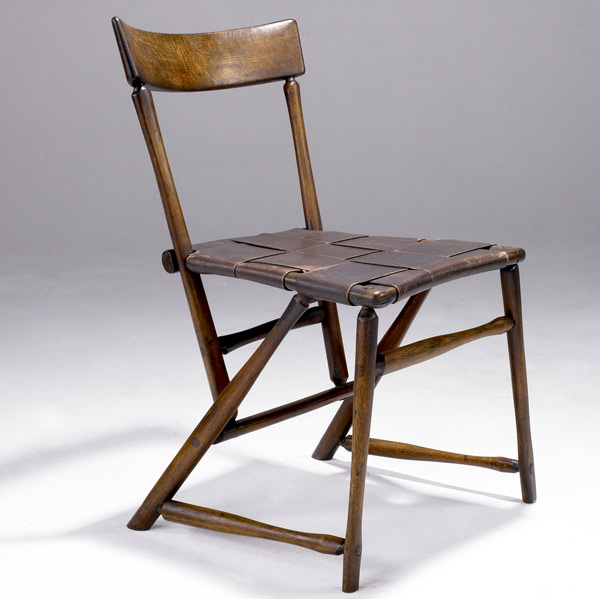
WHARTON ESHERICK Hammer-handle chair with burgundy leather webbed seat.
from rago
Détournement, the reuse of preexisting artistic elements in a new ensemble, has been a constantly present tendency of the contemporary avant-garde, both before and since the formation of the SI. The two fundamental laws of détournement are the loss of importance of each detourned autonomous element — which may go so far as to completely lose its original sense — and at the same time the organization of another meaningful ensemble that confers on each element its new scope and effect.SI
Détournement has a peculiar power which obviously stems from the double meaning, from the enrichment of most of the terms by the coexistence within them of their old and new senses. Détournement is practical because it is so easy to use and because of its inexhaustible potential for reuse. Concerning the negligible effort required for détournement, we have already noted that "the cheapness of its products is the heavy artillery that breaks through all the Chinese walls of understanding" (A User's Guide to Détournement, May 1956). But these points would not by themselves justify recourse to this method, which the same text describes as "clashing head-on against all social and legal conventions." Détournement has a historical significance. What is it?
"Détournement is a game made possible by the capacity of devaluation," writes Jorn in his study Detourned Painting (May 1959), and he goes on to say that all the elements of the cultural past must be "reinvested" or disappear. Détournement is thus first of all a negation of the value of the previous organization of expression. It arises and grows increasingly stronger in the historical period of the decomposition of artistic expression. But at the same time, the attempts to reuse the "detournable bloc" as material for other ensembles express the search for a vaster construction, a new genre of creation at a higher level.
rago fall 09 auction online catalog
thx ree
Venom and Eternity, or Treatise on Slime and Eternity (1951)
Self-healing Concrete
via vz
lichtenberg figures
via vz
rockpile
american routes archive / whole lot of good shit in this archive of ten years worth of shows
pipe dreams archive
american public media
emerson: coen+partners
brett king builder bucks co pa
gio ponti in praise of architecture (1960) free read or down load @ internet archive
enzo mari Autoprogettazione
goog pics
city of signs
via things mag
ipod/computer speakers: klipsch promedia 2.1 $150.00 vs bose music monitor $399
srs iwow plug-in
Daring to Look presents never-before-published photos and captions from Dorothea Lange’s fieldwork in California, the Pacific Northwest, and North Carolina during 1939. Lange’s images of squatter camps, benighted farmers, and stark landscapes are stunning, and her captions—which range from simple explanations of settings to historical notes and biographical sketches—add unexpected depth, bringing her subjects and their struggles unforgettably to life, often in their own words.via vz
When Lange was dismissed from the Farm Security Administration at the end of 1939, these photos and field notes were consigned to archives, where they languished, rarely seen. With Daring to Look, Anne Whiston Spirn not only returns them to the public eye, but sets them in the context of Lange’s pioneering life, work, and struggle for critical recognition—firmly placing Lange in her rightful position at the forefront of American photography.

justin found this one
heres a quiz. lets say you are on top of a mountain. where is eye level? i say eye level would be looking straight across to another mountain top of the same height. a certain party i know says its the horizon line regardless of the horizons lines relation to sea level. im prepared to be wrong here, but curious about the answer since this certain party is almost always right. heres all i found.
What is a Traveling clock, a Carriage clock, and a Coach clock, and what is the difference between them, since they have the same function? The aim of this article is not so much to offer new information to specialists, but rather to explain and clarify the subject to a general public, providing a background for the upcoming sale of the historically important Le Bon clock, featured in the April sale.
We know for certain that in order to function correctly, a watch, whether worn on the person or intended for traveling, had to include an autonomous moving force (the main spring). This was originally a helicoidal spring, and later a spiral (main spring). It had to possess enough autonomy to guarantee a sufficiently long duration of timekeeping, and to allow it to be transported while maintaining a relatively constant moving force.
It is not particularly relevant to this article to determine whether the first to adopt the spring as a moving force for a horological object was the architect Filippo Brunelleschi (1377-1446), quoted in Vasari in 1410, Jean de Paris, watchmaker to Louis XI, or, according to the Germans, Peter Henlein (c.1480-1542).
It does, however, seem to me to be essential for a detailed analysis of the origins of traveling clocks, to understand the difference between the names used to identify the various types of clocks, and to review, in this manner, their history. In order to remain accurate, it is necessary to take into account the many appellations used in the horological jargon and the various interpretations given in the past. The latter often derive from translations of historical documents, and offer descriptions that are often extremely brief, which only creates uncertainty. I would also like to emphasize the fact that horology is a mathematical and geometrical science, despite the many various interpretations of the product throughout the centuries. Though it is sometimes enthusiastically interpreted in too idealistic a manner, it always remains strictly logical. The few known horological “curiosities” are anomalies which give credit to the true inventions, the discoveries of which make the field even more fascinating and surprising. Let us go back to the beginnings of portable horology. The first travel clocks emerged around 1400 ; these early traveling clocks were referred to as simply l’horloge de voyage in French. It goes without saying that a trave- ling clock must function when it is being transported from one place to another. It is equally evident that the name pendulette de voyage, in the French language, could only be used after 1657, that is after the invention of the pendulum by Huygens, who published his work in a book called “Horologium”. All agree, whether it be the French or English horologists, that the modern Traveling Clock, or Carriage Clock, began in 1798, when A.L.Breguet sold his first carriage clock, or pendulette de voyage to General Napoleon Bonaparte, a few weeks before his departure for the Egyptian campaign. (See Antiquorum “The Art of Breguet”, April 1991, lot 10)
the barns collections new location in philly
architects shoes. i remember bernardos being the thing in ladies sandals in the 60's
Modernist Magazines Project The critic Michael Levenson warned that "A coarsely understood modernism is at once an historical scandal and a contemporary disability". The Modernist Magazine Project aims to refine and enhance the record through the production of a scholarly resource and comprehensive critical and cultural history of modernist magazines in the period 1880-1945. So-called 'little magazines' were small, independent publishing ventures committed to new and experimental work. Literally hundreds of such magazines flourished in this period, providing an indispensable forum for modernist innovation and debate. They helped sustain small artistic communities, strengthened the resolve of small iconoclastic groups, keen to change the world, and gave many major modernists their first opportunities in print. Many of these magazines existed only for a few issues and then collapsed; but almost all of them contained work of outstanding originality and future significance.via things mag
the modernist journals project
Dickie Peterson, whose screaming vocals and pounding bass lines helped push the psychedelic blues-rock trio Blue Cheer into the musical territory that would later be called heavy metal, died Monday in Erkelenz, Germany. He was 63 and lived in Erkelenz and Cologne.
In another example, Pirsig explains to the reader how one should pay attention and learn: when the Narrator and his friends came into Miles City, Montana, he had noticed (second page of chapter 8) that the engine "idle was loping a little", a sign that the fuel/air mixture was too rich. The next day he is thinking of this as he is going through his ritual to adjust the valves on his cycle's engine, because it "has picked up a noise". In the process, he notes that both spark plugs are black, another sign of rich mixture. He solves the puzzle as he is thinking about the feel-good-higher-altitude-mountain-air; the altitude is causing the engine to run rich. New jets are purchased, and installed, and with the valves adjusted, the engine runs well. His cycle begins coughing and almost quits when they get into the mountains of Montana. This is a more severe altitude problem, but he knows it will go away when they get back to lower altitude. He does adjust the carburetor to prevent over heating on the way down.
With this, the book details two types of personalities: those who are interested mostly in gestalts (romantic viewpoints, such as Zen, focused on being "in the moment", and not on rational analysis), and those who need to know details, the inner workings, mechanics (classic viewpoints with application of rational analysis, vis-a-vis motorcycle maintenance) and so on.
The Sutherlands represent an exclusively romantic attitude toward the world. The Narrator initially appears to prefer the classic approach. It later becomes apparent that he understands both viewpoints and is aiming, not for the middle ground, but for the necessary ground that includes both. He understands that technology, and the "dehumanized world" it carries with it, appears ugly and repulsive to a romantic person. He knows that such persons are determined to shoehorn all of life's experience into the romantic view. Pirsig is capable of seeing the beauty of technology and feels good about mechanical work, where the goal is "to achieve an inner peace of mind". Zen and the Art demonstrates that motorcycle maintenance may be dull and tedious drudgery or an enjoyable and pleasurable pastime; it all depends on the inner attitude, or lack thereof.
Pirsig shows that rationality's pursuit of "Pure Truths" derives from the first Greek philosophers who were establishing the concept of truth, against the opposing force of "The Good". He argues that although rational thought may find truth (or The Truth) it may not be valid for all experiences. Therefore, what is needed is an approach to viewing life that is more varied and inclusive and has a wider range of application. He makes a thorough case that originally the Greeks did not distinguish between "Quality" and "Truth" – they were one and the same – and that the divorce was, in fact, artificial (though needed at the time) and is now a source of much frustration and unhappiness in the world, particularly overall dissatisfaction with modern life.
Pirsig aims towards a perception of the world that embraces both sides, the rational and the romantic. This means encompassing "irrational" sources of wisdom and understanding as well as science, reason and technology. In particular, this must include bursts of creativity and intuition that seemingly come from nowhere and are not (in his view) rationally explicable. Pirsig seeks to demonstrate that rationality and Zen-like "being in the moment" can harmoniously coexist. He suggests such a combination of rationality and romanticism can potentially bring a higher quality of life.
Mexican Coke cultists of course have a rational explanation: Coca-Cola bottled in Mexico is sweetened with sugar, while the U.S. version is (almost) always made with high-fructose corn syrup. That is so. And it’s surprising, given the degree to which uniformity defines the Coke idea. Who knew the “secret formula” could accommodate ingredient variation? Andy Warhol once suggested that Coke’s sameness united us all: “A Coke is a Coke and no amount of money can get you a better Coke than the one the bum on the corner is drinking. All the Cokes are the same and all the Cokes are good. Liz Taylor knows it, the president knows it, the bum knows it and you know it.”
hang on soupy
otis
i hate the stooges worst band ever
via bt
little red rooster shooting up the charts
little red rooster
little red rooster
KES: Can you explain why you think non-conceptual poetry is dead and how conceptual writing breathes new life into that space—or is it an entirely new space?
KG: The poet David Antin sums it up:
“. . . i had always had mixed feelingsWe’re uncreative. You might ask, what’s wrong with creativity? “I mean, we can always use more creativity.” “The world needs to become a more creative place.” “If only individuals could express themselves creatively, they’d be freer, happier.” “I’m a strong believer in the therapeutic value of creative pursuits.” “To be creative, relax and let your mind go to work, otherwise the result is either a copy of something you did before or reads like an army manual.” “I don’t follow any system. All the laws you can lay down are only so many props to be cast aside when the hour of creation arrives.” “An original writer is not one who imitates nobody, but one whom nobody can imitate.”
about being considered a poet if robert lowell is a
poet i dont want to be a poet if robert frost was a
poet i dont want to be a poet if socrates was a poet
ill consider it”
When our notions of what is considered creative became this hackneyed, this scripted, this sentimental, this debased, this romanticized… this uncreative, it’s time to run in the opposite direction. Do we really need another “creative” poem about the way the sunlight is hitting your writing table? No. Or another “creative” work of fiction that tracks the magnificent rise and the even more spectacular fall? Absolutely not.
KES: Notes on Conceptualism emphasizes that words, like pictures, are objects and that “a word is worth a thousand pictures.” Yet I have a different experience with conceptual poetry than I do with other works of art. What expectations, if any, should I have when approaching conceptual writing?
KG: Conceptual writing treats words as material objects, not simply carriers of meaning. For us, words are both material and carriers of meaning; it’s language and you can get rid of meaning no matter how hard you try. This is made manifest by the digital environment where, since the dawn of media, we’ve had more on our plates than we could ever consume, but something has radically changed: never before has language had so much materiality—fluidity, plasticity, malleability—begging to be actively managed by the writer. Before digital language, words were almost always found imprisoned on a page. How different today when digitized language can be poured into any conceivable container: text typed into a Microsoft Word document can be parsed into a database, visually morphed in Photoshop, animated in Flash, pumped into online text-mangling engines, spammed to thousands of email addresses and imported into a sound editing program and spit out as music; the possibilities are endless.
open house new york
edward hopper studio 1 washington sq
via vz
Big Red soda
via vz
She may be most well-known for her Marina the Mermaid act. Every Friday, Marina would swim in the hotel pool of the Yankee Clipper hotel. While you enjoyed happy hour, you could watch a mermaid or two languidly swim from porthole to porthole of the Wreck Bar.via vz
That was until the hotel shut down for renovations this summer.
Marina had many devoted fans, although she and her fellow mermaid performers never saw them: “I don’t know how many people the Wreck Bar holds, but the funny part is that we don’t get to see people when we perform because we’re in the pool. We hear them. We hear from the bartender that the place was packed, but when we’re done and we dry off and we come back down, they’re all gone.”
The good news is that the hotel, now known as the Sheraton Fort Lauderdale Beach Hotel, reopens in early 2010 and Marina will be back at the Wreck Bar. For now, listen to our story (at the top of the post) as you await the return of Marina the Mermaid.
jim marshals personal observations on lester bangs
As for Susie Greene, Ms. Essman thinks she is misunderstood.
“People think she’s a yelling, angry, crazy woman, when the truth is it’s justified, she’s provoked,” Ms. Essman said. “I love Susie Greene — she is so freeing. I analyze things from every which way. She just reacts without any kind of censor. Everything is an indignity, and she is absolutely sure of herself in every single response.”
apple crates
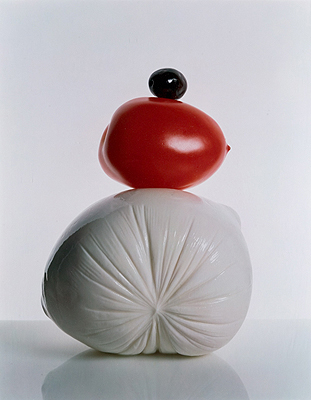
rip Irving Penn
not clear if this is a covered barge or what. loft like interior.
painters painting
wfmu ichiban music stream blog
rip mr magic and his wbls rap attack show


depicting rain
surfing cowboys
weird friends (textile blog)
via reference library
Penthouse: A lot of people are very interested about what goes on between you and Bob Dylan. What do you talk to him about?via afc sidebar
Smith: Nothin'.
Penthouse: Absolutely nothin'?
Smith: Nah. Well, like he came backstage to see me, and he's a totally physical guy. There was a period in my life when I thought about Dylan constantly. It was as if he had been my boyfriend. But when he walked into the room he was just a guy, a really cool guy. He ceased being Bob Dylan to me.
I enjoyed hearing him say my name. It was like high school. It was real embarrassing teenage stuff. He didn't have nothing to say to me, I didn't have nothing to say to him. We kept walking around, like dogs in a pit. He said, "What do you read Rimbaud in?" I said, "English." He said, "I read him in French." Totally teenage nonsense. But I thought he was a really cool guy, y'know? And that's all he is to me now, a cool guy. I don't like being around him too much 'cause we're two very restless people, and that creates a lot of nervousness. Plus I'm shy around really cool guys until I get to know them. Like, when I met Hendrix we just talked about the weather. When I met Jim Morrison we sat around looking at girls' legs and discussing who had the best ass.
Dylan asked me about a poem I had written, the one about his dog. I felt like I'd been caught writing about a boy in my diary. I said, "Ah, c'mon, don't get mad at me." Really stupid. I told him it was just a dream I had. He said, "Oh, I like dreams. I ain't mad. I really like what you're doing." He didn't make any heavy statements.
He gave me a fantastic singing lesson. He really lives by singing. We were in a room with a few people who are gettin' drunk and singing, taking turns singing all this soft, folksy shit, and when it was Dylan's turn to sing he started singing like he's at Madison Square Garden. It was pure heart, and I don't think anyone's ever captured that successfully on record.
Like I said, he ain't Bob Dylan to me anymore, he's a guy. I wasn't that cool around him, but let me tell ya, he wasn't no cooler. It was touching to see such great verbalizers acting like non-verbal jerkoffs.
Prefab 20*20: Visions for 400 SF Homes, an international open ideas competition organized by Architecture For Humanity Vancouver, Architectural Institute of British Columbia, Interior Design Show West 2009, and sponsored by Azure Magazine, recently announced the winners and shortlisted entries. Prefab 20*20 challenges designers to propose a free-standing, prefab dwelling unit for a footprint no more than 400sf (37.5sm) in an urban setting anywhere in the world. Fit for two adults, its basic program shall include sleeping, bathing, cooking, living, working/studying, and storage areas.
wm s burroughs junky audio tapes
the north mississippi all stars released a fine album called shake hands with shorty. i happen to know from growing up in the south that shake hands with shorty was the set up line for a silly joke. i checked around a little on the internet and cant find any mention of the original joke itself, just the album. any one wanna take a guess at the punch line? (immediate family excluded adman!)
i am a rock
dylan a vision in polka dots
“Visual Acoustics,” a documentary that opens in New York on Oct. 9, and later in Los Angeles and other cities, traces Mr. Shulman’s career and the rise of the Modernist movement to which he’s indelibly linked. Filmed by a first-time director, Eric Bricker, and narrated by Dustin Hoffman, it catches Mr. Shulman making a victory lap of sorts, revisiting homes he photographed decades earlier. They include the Kaufmann House, bottom left, by Richard Neutra, and Case Study House No. 22, an elegant glass box by Pierre Koenig perched high above Los Angeles, left. (Mr. Shulman’s images of the latter home, with the nighttime city stretching out below, remain some of Modernism’s greatest advertisements.) As the film makes clear, Mr. Shulman wasn’t simply an architectural photographer but a lifestyle propagandist.
amused a co-w*rker's child with this whale drawing in MSPaint. no tablet available--had to draw it with a mouse (old school). folks with Macs who think they are in the "graphics elite" are really missing out on a lot of fun.
-T.M.
+-+-+-+-+-+-+-+-+-+-+-+-+-+-+-+-+-+-+-+-+-+-+-+-+-+-+-+-+-+-+-+-+-+-+-+-+-+-+-+-+-+-+
• Unless you plan to use this computer only for your digital photography, there are probably two orders of magnitude more software, overall, for PCs vs. Macs. So keep in mind, also, the entire universe of what you will be using this computer for. Very few computers are used for only one single application.
The problems that people have with PCs come down to the fact that a typical PC system is made up of hardware and software from dozens or even hundreds of different firms, and that even with billions of PCs on the planet, the exact combination of both all of the hardware and all of the software found in any one PC is probably completely unique. On top of that, because PCs running Windows are 90% of the installed base of personal computers, they are the preferred target for virus and malware authors. It is the abundance and variety of both hardware and software offerings that gives PCs their versatility and low cost, but, at the same time, it’s that exact combination that also causes most of the problems that people have with PCs. You can’t have the good without the bad ... they go together. If you go with a Mac, you can avoid some of the pitfalls that exist in the PC world, but at the same time you will be avoiding a lot of the benefits as well, and precluding yourself from running most of the software that is currently being written (at least without switching operating systems and converting the Mac back into what is probably a sub-optimal PC).
(Note: Please keep your advice and opinions objective. We are here to help this member with your knowledge and guidance. Let's not turn this into a heated PC vs. Mac flame war. Respect each other, and keep it civil. Thank you.)
jesus boots
exhaust fan, kitchen at falling water house
Cherokee Red (Pittsburgh Paints Color #6432-7) - Often referred to as Frank Lloyd Wright's personal favorite, Cherokee Red is perhaps the most famous color at Fallingwater, and was used to coat most of the home's metal and ironwork. Wright is said to have limited his use of Cherokee Red at Fallingwater to metal accents because steel and iron are products of iron ore created through fire.

